Table of Contents
Hey everyone. In this article we’re comparing a few of the Asus gaming ultraportable notebooks available right now: two 15-inch models, the Zephyrus M15 and Zephyrus G15, and the more compact Zephyrus G14.
Pricing and configurations vary between regions, but the lower-tier M15 models go for around 1300 to 1500 dollars at this moment, just like many of the G14 and G15 configurations.
I’ll explain all the important differences between these devices here, so you can decide which is the better value pick where you’re living.
We’ve also reviewed each of these laptops separately, and I’ve included the links down below:
Let’s start with a specs sheet of these notebooks in the configurations we’ve tested, and then a quick look at the exterior.
| Asus ROG Zephyrus M15 GU502LWS | Asus ROG Zephyrus G15 GA502IU | Asus ROG Zephyrus G14 GA401IV | |
| Screen | 15.6 inch, 3840 x 2160 px resolution, IPS, 60 HZ, matte, AU Optronics B156ZAN03.1 panel or 15.6-inch, 1920 x 1080 px IPS 240 Hz 3ms, 16:9, non-touch, matte, Sharp LQ156M1JW16 panel or 15.6 inch FHD 144 Hz 60% sRGB |
15.6-inch, 1920 x 1080 px IPS 240 Hz 3ms, 16:9, non-touch, matte, Sharp LQ156M1JW16 panel or 15.6 inch FHD 144 Hz 60% sRGB |
14-inch, 2560 x 1440 px IPS 60 Hz, 16:9, non-touch, matte, ActiveSync, AU Optronics B140QAN02.3 panel or 14-inch, 1920 x 1080 px IPS 120 Hz, 16:9, non-touch, matte, ActiveSync, CEC LM140LF-1F01 panel |
| Processor | Intel Comet Lake Core i7-10750H, 6C/12T | AMD Ryzen 7 4800HS, 8C/16T | AMD Ryzen 7 4800HS or Ryzen 9 4900HS, 8C/16T |
| Video | Intel UHD and Nvidia GeForce RTX 2070 8GB (80-90W Max-Q, Overclocked, GeForce 445.87), with Optimus GTX 1660Ti 80W, RTX 2060 90W and RTX 2070 90W configurations also available |
AMD Radeon Vega 7 + Nvidia GeForce GTX 1660Ti Max-Q 60W 6 GB GDDR6 (with Nvidia 445.87) RTX 2060 65W configuration also available |
AMD Radeon Vega 7/8 + Nvidia GeForce RTX 2060 Max-Q 65W 6 GB GDDR6 (with Nvidia 442.74) GTX 1660Ti 60W configuration also available |
| Memory | 32 GB DDR4 2933 MHz (16 GB soldered, 1x DIMM) – up to 3200 MHz | 32 GB DDR4 3200 MHz (16 GB soldered, 1x 16 GB DIMM) | 16 GB DDR4 3200 MHz (8 GB soldered, 1x 8 GB DIMM) |
| Storage | 2x M.2 PCIe x4 slots, RAID support | 2x M.2 PCIe x4 slots | singleM.2 PCIe x4 slot |
| Connectivity | WiFi 6 (Intel AX201) 2×2 with Bluetooth 5.0, Gigabit LAN (Realtek RTL8168/8111) | WiFi 6 (Intel AX200) 2×2 with Bluetooth 5.0, Gigabit LAN (Realtek RTL8168/8111) | WiFi 6 (Intel AX201) 2×2 with Bluetooth 5.0 |
| Ports | 1x USB-A 3.2 gen2, 2x USB-A 3.2 gen1, 1x USB-C with Thunderbolt 3, video&charging, HDMI 2.0b, LAN, headphone/mic, Kensington Lock | 1x USB-A 3.2 gen2, 2x USB-A 3.2 gen1, 1x USB-C gen2 with video&charging, HDMI 2.0b, LAN, headphone/mic, Kensington Lock | 2x USB-A 3.2, 1x USB-C gen 2 with DP1.4 and charging (left), 1x USB-C gen 2 data-only (right), HDMI 2.0b, headphone/mic, Kensington Lock |
| Battery | 76 Wh, 240 W power adapter, 65W USB-C charging possible | 76 Wh, 180 W power adapter, USB-C charging up to 65W | 76 Wh, 180 W power adapter, USB-C charging up to 65W |
| Size | 360 mm or 14.17” (w) x 252 mm or 9.92” (d) x 19.9 mm or .77” (h) – Prism models | 360 mm or 14.17” (w) x 252 mm or 9.92” (d) x 20.4 mm or .79” (h) | 324 mm or 12.75” (w) x 222 mm or 8.74” (d) x 19.9 mm or .78” (h) |
| Weight | 2.02 kg (4.45 lb), .78 kg (1.72 lbs) power brick and cables, US version | 2.02 kg (4.46 lb), .56 kg (1.23 lbs) power brick and cables, EU version | 1.64 kg (3.65 lbs) without Anime Matrix display, .59 kg (1.3 lbs) power brick and cables, EU version |
| Extras | single-zone RGB backlit keyboard on the Prism Black/Gray models, per-key RGB on the Brushed Black variant, 2x 2W bottom stereo speakers, no webcam | white backlit keyboard, no webcam, stereo bottom speakers | white backlit keyboard, no webcam, quad speakers, finger-sensor, optional Anime Matrix Display |
Design and ergonomics
The Zephyrus G14 stands out as the lighter and smaller laptop here, as well as the nicest built out of the three, as it’s entirely made out of magnesium alloys. It weighs about 3.6-3.7 lbs, while the M15 and G15 weigh roughly 4.5-4.7 lbs.
The M15 comes second in terms of build quality, with a magnesium interior, but a plastic underside and an option for either a plastic lid on the Prism Black and Gray models, or brushed aluminum on the Brushed Black variant.
Finally, the G15 gets a plastic interior and underside, and brushed aluminum on the lid. It’s a good-quality plastic, but still doesn’t feel as premium as the other two, and still shows smudges easier, especially since it’s only available in black finishing. In comparison, the G14 is available in a Silver/White or dark-gray color, while the M15 is available in either Black or Gray versions.
As far as ergonomics go, the two 15-inch models are nearly identical, with a box-shaped interior, blunted edges and corners, and the ports lined on the sides. The M15 offers Thunderbolt 3 support, though, while the G15 and G14 do not.
The M15 also gets the best external thermal design here. Air is sucked in from the bottom and through the keyboard and blown out through the back and laterals. The G15 uses a similar design, but for some reason, Asus decided to cover the bottom air intakes and obstruct the airflow.
Finally, the G14 is a completely different design with an Ergolift hinge that raises the laptop’s body on rubber feet placed at the bottom of the screen, but that results in hot air being pushed into the screen. Cramming powerful components inside a compact 14-inch chassis also means this will run fairly hot with demanding loads and games.
Audio is one final aspect I should mention here. The G14 gets punchy and loud quad-speakers, with two of them on the bottom and two extra tweeters firing through these cuts in the palm-rest. The 15-inch models, on the other hand, only get average quality bottom speakers, but the M15 slightly compensates with an excellent headphone output, integrating a dedicated Sabre Hi-Fi DAC.
Keyboards, screens, and battery life
The implemented keyboards look similar between the three, with the 15-inch models getting an extra column of function keys at the right. They feel differently in daily use, though. The G14 is by far the better typer imo, with quick and accurate response, with the M15 coming second and the G15 third, both shallower, mushier, and rather unforgiving implementations.
The G14 and G15 only get while backlighting though, while the M15 gets RGB lit keys. However, Asus offers two keyboard versions for the M15. The Prism Black and Prism gray models get single-zone backlit keyboards with a fair bit of light creeping from under the keycaps, while the Brushed Black version gets the higher-tier keyboard implemented on the Zephyrus S15, with per-key RGB control.
For mouse, the G14 and M15 both include glass clickpads, with the one on the G14 larger in size, while the G15 gets a plastic clickpad. They all get Precision drivers and are overall fine for daily use, but the G14 ends up winning on inputs.
The G14 is also the only one to integrate a finger-sensor within the power-button, while the other two lack any sort of biometrics. Neither of these laptops integrate any sort of camera.
Things get a bit complicated when it comes to the screen options, as each of these Zephyrus is available with several different panels. As the name suggests, the G14 gets a 14-inch matte screen with either a FHD 120 Hz or QHD 60 Hz panel on the mid and top configurations. Both are roughly 300-nits of brightness and 100% sRGB of color. The FHD panel is slightly brighter and included on the more affordable options, but the slow response times don’t make it ideal for gaming, despite its 120 Hz refresh rate. The QHD is just as slow and more expensive, plus takes a toll on battery life, but it’s also crisper and offers better blacks and contrast.
The G15 is available with either a 144 Hz or 240 Hz 15-inch matte screen. The 240 Hz option is by far the better choice, as it’s a fast 3ms panel with roughly 350-nits of brightness and 100% sRGB color, while the 144 Hz is slower, dimmer and more washed out. However, the 240 Hz option is mostly only available in the higher-tier G15 configurations.
As far as I can tell right now, the M15 gets the same two FHD 144 Hz or 240 Hz panels, again with the 144 Hz washed-out option reserved for the base-level configurations, but Asus also offers a 4K 400-nits panel with 100% AdobeRGB panel option here, an excellent choice for creators. 4K configurations are more expensive though, and won’t last much on battery.
Speaking of that, there’s the same 76 Wh battery on all these laptops, but the G14 and G15 AMD-based configurations run more efficiently. Runtimes will vary based on your usage and the screen options, but you should roughly expect 4-6 hours of daily multitasking and 8-10 hours of video on the G14 and G15 FHD models, while the Intel-based Zephyrus M15 will last roughly 3-5 hours on daily use and 6-8 on video.
All these laptops require full-size power bricks to drive the hardware inside, but can also charge via USB-C with a matching charger, if you decide to buy it on the side.
Specs and performance
The G14 and G15 models are both based on AMD’s excellent Ryzen 4000 hardware platform, with up to 8Core processors, paired with Nvidia GTX 1660Ti or RTX 2060 graphics. However, Asus only went with the Max-Q lower-power graphics chips here. That was expected for the smaller G14, which would have struggled cooling a more powerful GPU, but many were expecting a full-power implementation on the 15-inch model.
That’s not the case, and as far as I can tell, there’s no conspiracy here. The explanation is simple: the 2020 G15 is entirely based on the 2019 Zephyrus G 15-inch design, and at that point, AMD Ryzen 3000 hardware was not competitive enough to compel OEMs to implement it in a premium chassis, with a complex thermal module and a price to match. Instead, the G15 was designed to compete in the budget section, and so is the 2020 G15.
Sure, Asus could have probably put this new AMD hardware inside the current M15 chassis, but they chose not to with this generation. Hence, the 2020 sticks with Max-Q graphics and the controversial thermal design. The fans’ intakes on the bottom are covered with a plastic film. However, whether removing it helps or not is controversial at this point, with Youtube reviews pointing in both directions. I haven’t tested this out on our sample, as removing the plastic film would have voided the warranty here.
The G14 is a controversial thermal design as well, but for different reasons. The intakes are perfectly fine here and Asus implemented a complex cooling module, but a fair bit of hot air is blown into the screen, with certain parts of the panel reaching temperatures in the low to high 40s.
Finally, the M15 gets the best thermal design here. We’ve reviewed the higher-tier RTX 2070 Super graphics model, and while it does heat up in certain parts around the thermal modules, most of the areas that you’ll come in contact with stay withing high 30s to low 40s. Plus, lower-tier configurations will run cooler, as the RTX 2070 in this variant can run at up to 105W, while the 1660ti and 2060 versions run at lower power.
Speaking of the M15, this one is based on a 10-th gen Intel Comet Lake platform, with most configurations running on a 6Core i7-10750H processor. However, the M15 gets full-power 1660Ti and 2060 graphics options, and Max-Q implementations of the RTX 2070 and 2070 Super chips on the higher-end models.
We’ll get to benchmarks and gaming results in a bit, but first I should also mention that all these laptops support up to DDR4 3200 MHz memory, with part of the RAM soldered on the motherboard and an extra DIMM for upgrades. The 15-inch models also get two M.2 storage slots, with RAID support on the M15 and without on the G15, while the G14 gets a single M.2 SSD slot. There’s also Wireless 6 implemented on all three models, as well as wired Gigabit LAN on the 15-inch options.
Ok, as far as benchmarks go, we’ll include our findings from the G14, G15, and M15 configurations that we’ve reviewed.
Take these for what they are, as we haven’t reviewed the 1660ti variant of the G14 or the lower-tier 2020 Zephyrus M15 models with RTX 1660ti and 2060 graphics, which are the ones you’re most likely considering as alternatives for the G14 and G15 variants. However, since the 2019 and 2020 Zephyrus M models are pretty much the same, we’ve included our findings from the 2019 1660Ti review in here, for a broad picture of what to expect from that base-level m15 configuration.
We ran a couple of different tests on our review units, from the standard synthetic benchmarks such as Cinebench R20 or Geekbench, to Blender, Specviewperf, or Handbrake, which simulate real-life work with professional applications and video encoding. We also ran the combined 3Dmark tests, and gathered all our results in these charts.
These results especially showcase AMD’s competitive advantage at this point. The Ryzen 8Core processors win in all the multi-threaded loads by a fair margin, while running at significantly lower power. I’ve even included the 8Core Intel Comet Lake i7 platform for comparison, which might power the M15 in certain regions and is what you’ll primarily find on the higher-tier Zephyrus S15, and even that is no match for the AMD hardware in most tests.
However, the Intel 6Core and 8Core CPUs tie and even take some wins in single-core tests, and the M15 comes on top in GPU tests and gaming, thanks to the more powerful implemented graphics.
We ran a couple of titles on these laptops, and here’s what to expect. Again, we’ve included the 1660Ti powered Zephyrus M15 in the images down below, and expect roughly 2-5% improved results for the 1660Ti 2020 model, given the hardware similarities between the two generations.
| FHD gaming, average framerates | M15 – i7 + RTX 2070 Super 90W | G15 – R7 + GTX 1660Ti 60W | G14 – R9 + GTX 2060 65W |
| Battlefield V (DX 12, Ultra Preset, Ray-Tracing OFF) | 113 fps (74 fps – 1% low) | 74 fps (44 fps – 1% low) | 68 fps (46 fps – 1% low) |
| Battlefield V (DX 12, Ultra Preset, Ray-Tracing ON, DLSS OFF) | 101 fps (70 fps – 1% low) | – | 39 fps (28 fps – 1% low) |
| Far Cry 5 (DX 11, Ultra Preset, SMAA) | 105 fps (81 fps – 1% low) | 78 fps (57 fps – 1% low) | 82 fps (66 fps – 1% low) |
| Middle Earth: Shadow of Mordor (DX 11, Ultra Preset) | 134 fps (92 fps – 1% low) | 128 fps (85 fps – 1% low) | 113 fps (82 fps – 1% low) |
| Red Dead Redemption 2 (DX 12, Ultra Optimized, TAA) | 84 fps (67 fps – 1% low) | 62 fps (28 fps – 1% low) | 61 fps (51 fps – 1% low) |
| Rise of Tomb Raider (DX 12, Very High Preset, FXAA) | 68 fps (43 fps – 1% low) | 80 fps (54 fps – 1% low) | 80 fps (56 fps – 1% low) |
| Shadow of Tomb Raider (DX 12, Highest Preset, TAA) | 86 fps (56 fps – 1% low) | 68 fps (55 fps – 1% low) | 72 fps (52 fps – 1% low) |
| Strange Brigade (Vulkan, Ultra Preset) | 145 fps (109 fps – 1% low) | 92 fps (77 fps – 1% low) | 106 fps (84 fps – 1% low) |
| The Witcher 3: Wild Hunt (DX 11, Ultra Preset, Hairworks On 4) | 98 fps (71 fps – 1% low) | 62 fps (46 fps – 1% low) | 74 fps (57 fps – 1% low) |
- Battlefield V, The Witcher 3 – recorded with Fraps/in-game FPS counter in campaign mode;
- Far Cry 5, Middle Earth, Strange Brigade, Red Dead Redemption 2, Tomb Raider games – recorded with the included Benchmark utilities;
- Red Dead Redemption 2 Optimized profile based on these settings.
As far as hardware thermals go, the M15 has an edge when comparing similar tier 1660Ti or 2060 configurations. Keep in mind we’ve reviewed the higher-power 2070 Super configuration, and that’s about on par with the 2060 65W variant of the G14 in terms of external temperatures, while the 1660Ti G15 runs slightly cooler. However, you should realistically expect the 1660 and 2060 variants of the M15 to run cooler as well.
Noise wise, though, the M15 runs the loudest on Turbo, at up to 51-52 dB at head-level, but that’s again for the RTX 2070 model, and the lower-tier models light run slightly quieter. The G15 comes close, at 48-49 dB on Turbo, but the G14 is significantly quieter, with the fans ramping up to 44-45 dB at head level.
The G14 hits the highest internal temperatures though. On Turbo, the CPU consistently averages temperatures in the mid-90s with games, while the GPU settles for high-70s, low-80s in most titles. That’s for the Ryzen 9 and GTX 2060 version, and you can set it up to run at lower temperatures by slightly limiting the overpowered CPU, with a minor hit on framerates, of within 10%.
We measured similar CPU and GPU temperatures from the Ryzen 7 + 1660 Ti version of Zephyrus G15, due to its limited thermal design. This can also be tweaked to run cooler, though.
In comparison, the much more power-hungry Zephyrus M15 hits CPU temperatures in the high-70s to high-80s in most games, with low 80s on the GPU. Lower tier version will run cooler, though, and the Intel CPU can also be tweaked in order to reduce temperatures, even if the 10th gen platform is not as tweakable as the previous 9th gen hardware, with limited undervolting and Throttlestop support.
Final thoughts
Long story short, here are the important things you should take out of this comparison.
The G14 is the smaller and lighter option here, as well as the nicer made and the only one to integrate a finger-sensor. It also gets the bet typing experience and the best clickpad, but while the screen options are fine for daily use, they’re both rather slow and not a great option for fast-paced games.
The M15 is a slightly larger and heavier device, and comes in close to the G14 in terms of build quality. It offers a few IO extras, such as LAN and Thunderbolt 3, integrates an RGB keyboard and better screen options. Stay away from the base-level 144 Hz panel though, that’s only about 60% sRGB as far as I can tell and not very fast either. The FHD 240 Hz is a great option for gaming, though, and the 4K panel is excellent for creators.
Finally, the G15 is the more budget option here, with a plastic construction and mushier inputs, but gets the FHD 144 Hz or 240 Hz screen options also available on the M15 as its main advantage over the G14, alongside the competitive pricing.
If interested, our reviews of the updated M16, G15 and G14 laptops are also available on the site: Zephyrus G14, Zephyrus G15 and Zephyrus M16.
Performance-wise, all of these are excellent for daily use, but the AMD models win at efficiency and performance in multi-threaded demanding workloads. The M15, on the other hand, is the better gamer. Don’t expect more than 10-15% higher framerates on the 1660Ti and 2060 configurations when compared to the Max-Q implementations on the Zephyrus G models, but expect this to run cooler, both at components and at case level. That, overall, makes the M15 the better potential gamer here, just make sure you’re getting the 240 Hz panel as well.
The G14, on the other hand, might be the more versatile all-rounder, especially if you plan to vary the laptop with you to school or office. As for the G15, that comes third on my list, and something I’d only consider if the other two are outside of my budget, but make sure to get the 240 Hz screen if you end up going with it.
With that in mind, we’re going to wrap-up this article here, but I’d love to hear your thoughts on these products, so get in touch in the comments section with your feedback and questions.

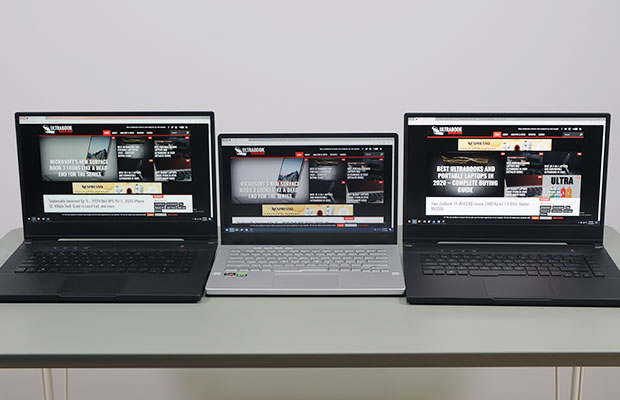
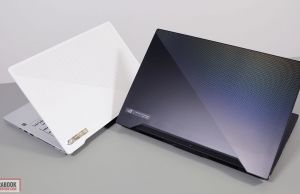
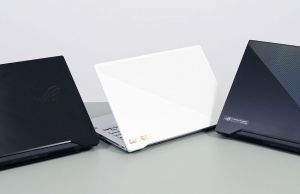
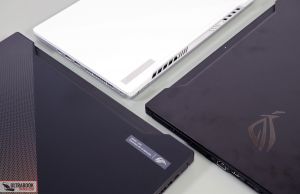
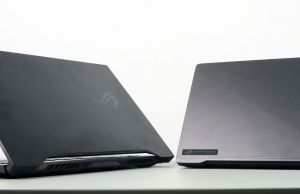
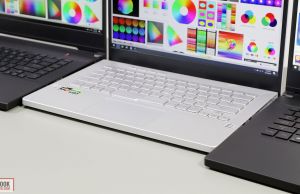
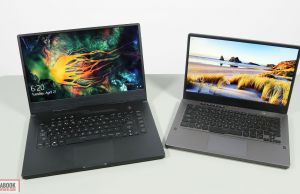



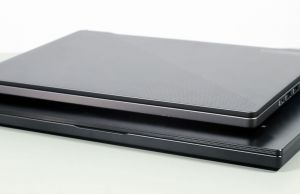

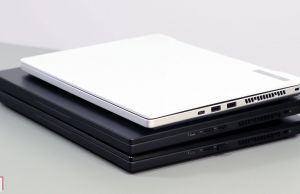
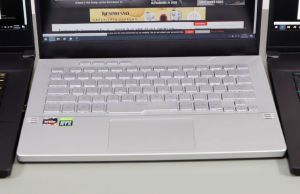
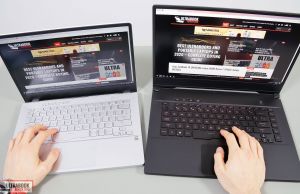
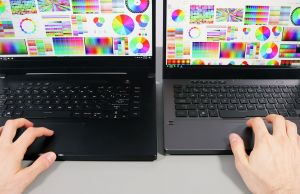
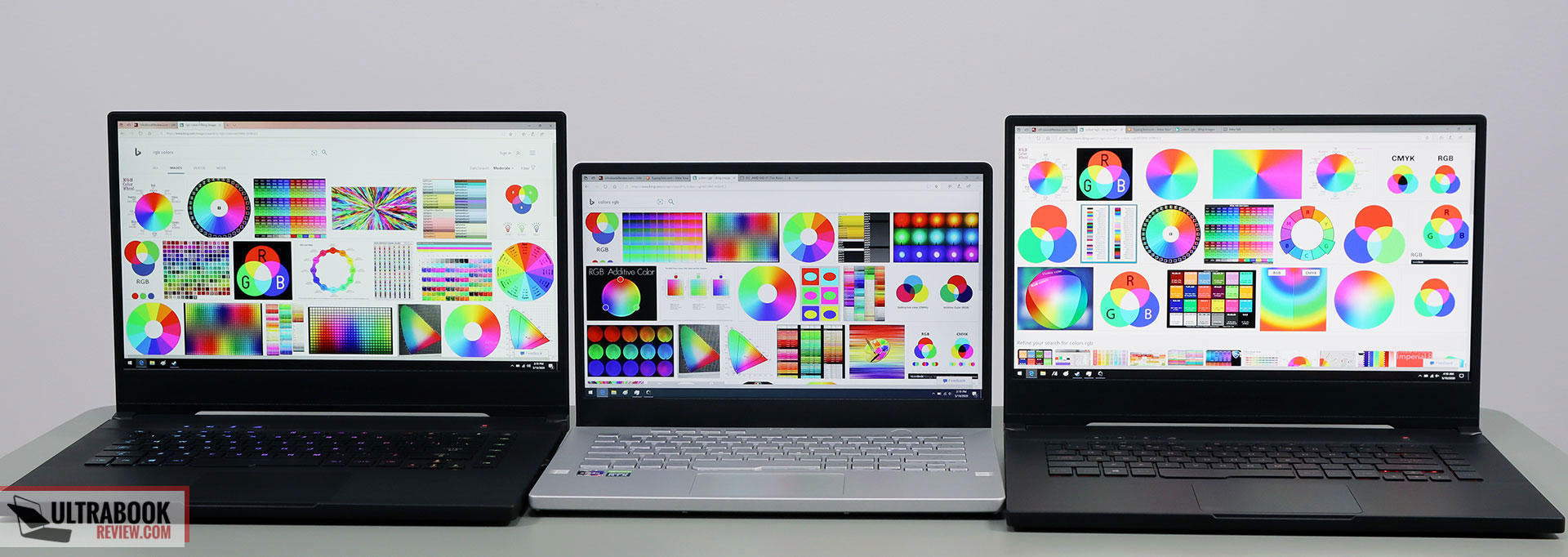
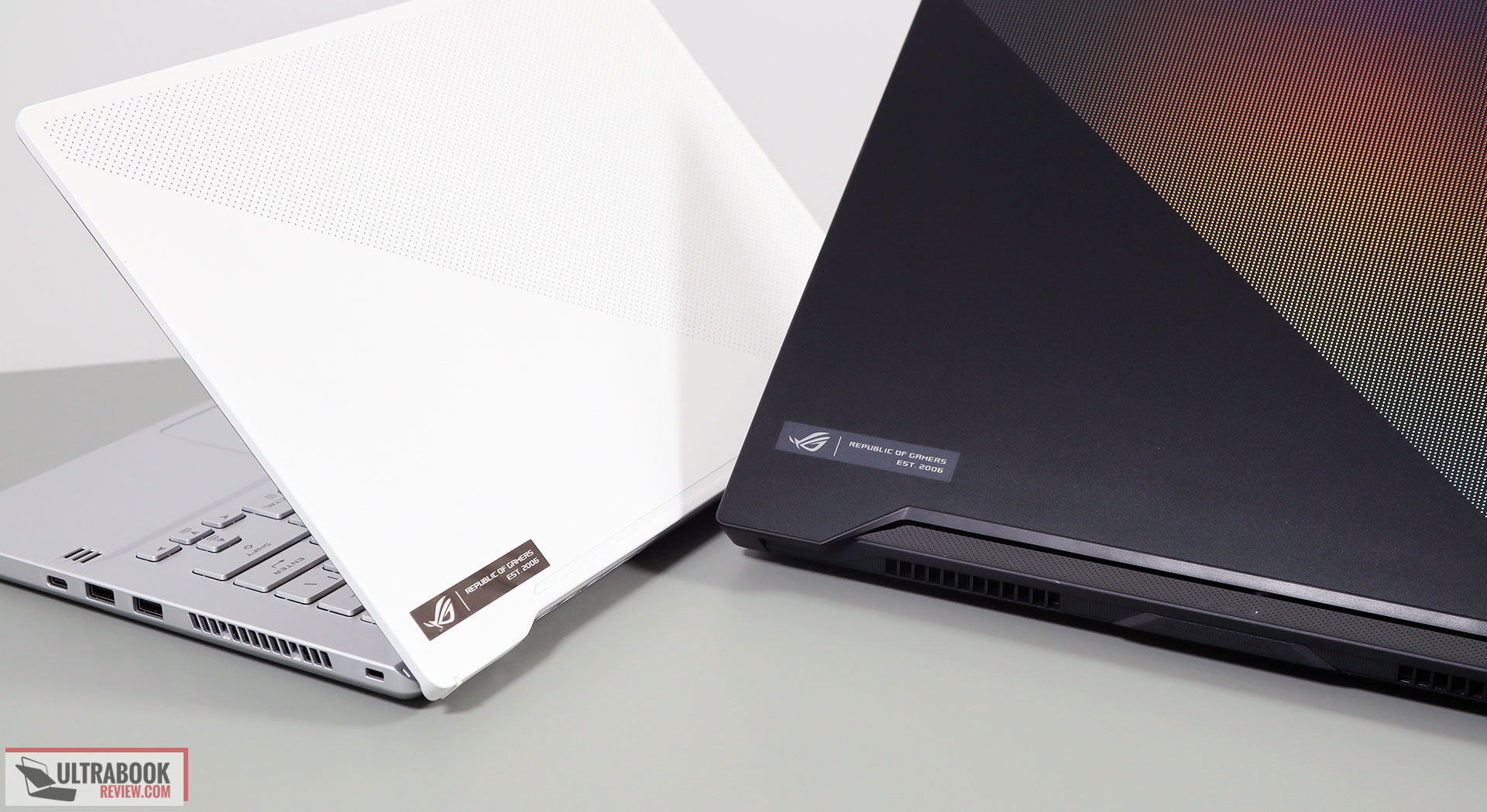
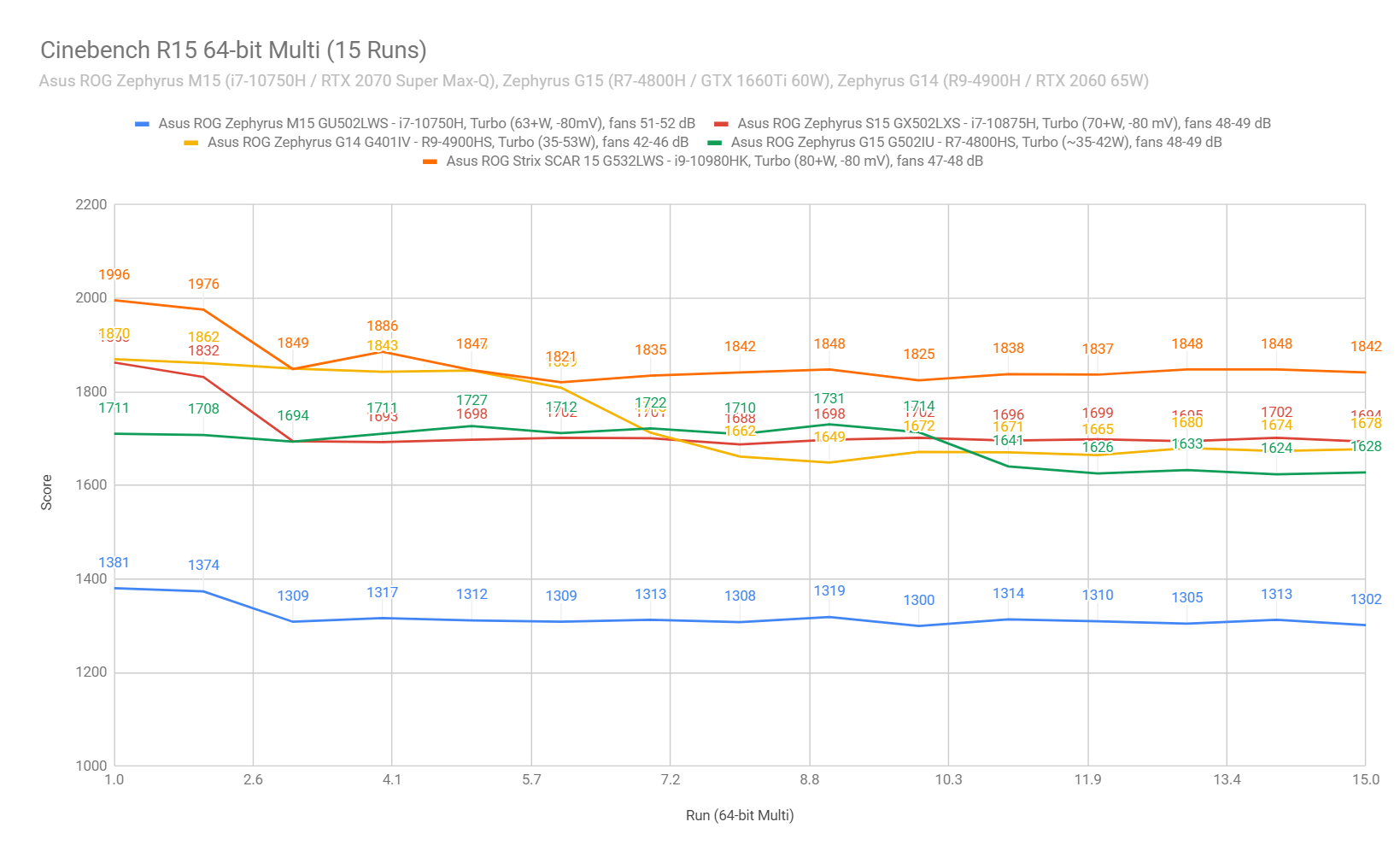
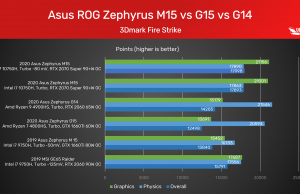
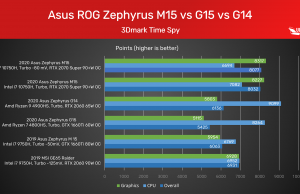
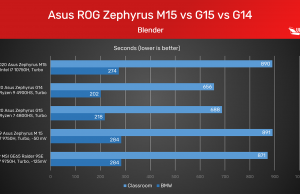
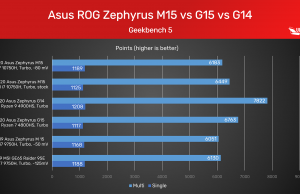
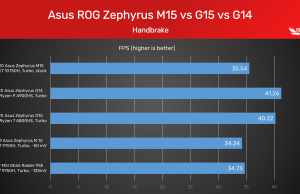
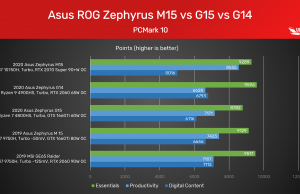
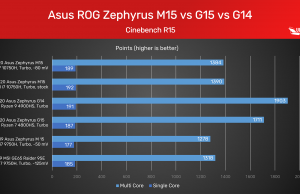
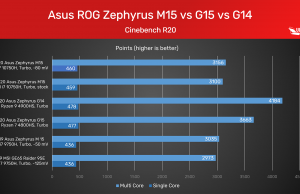
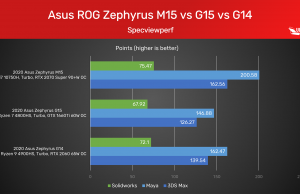
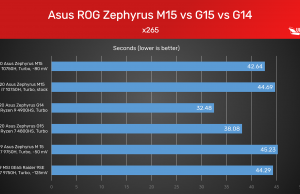
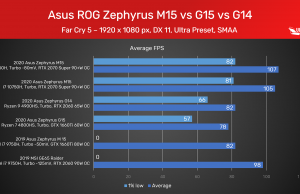
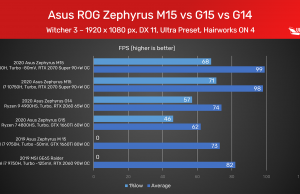
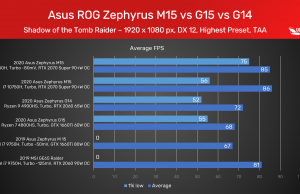
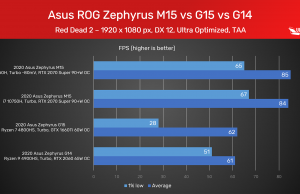
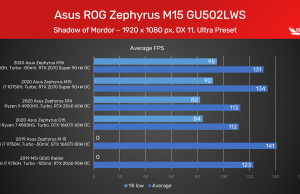
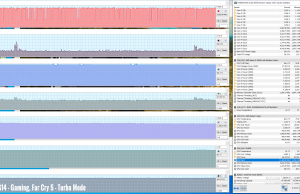
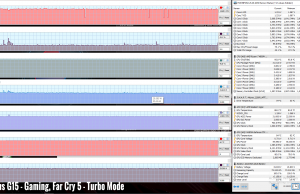
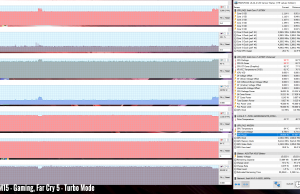
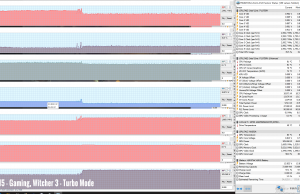
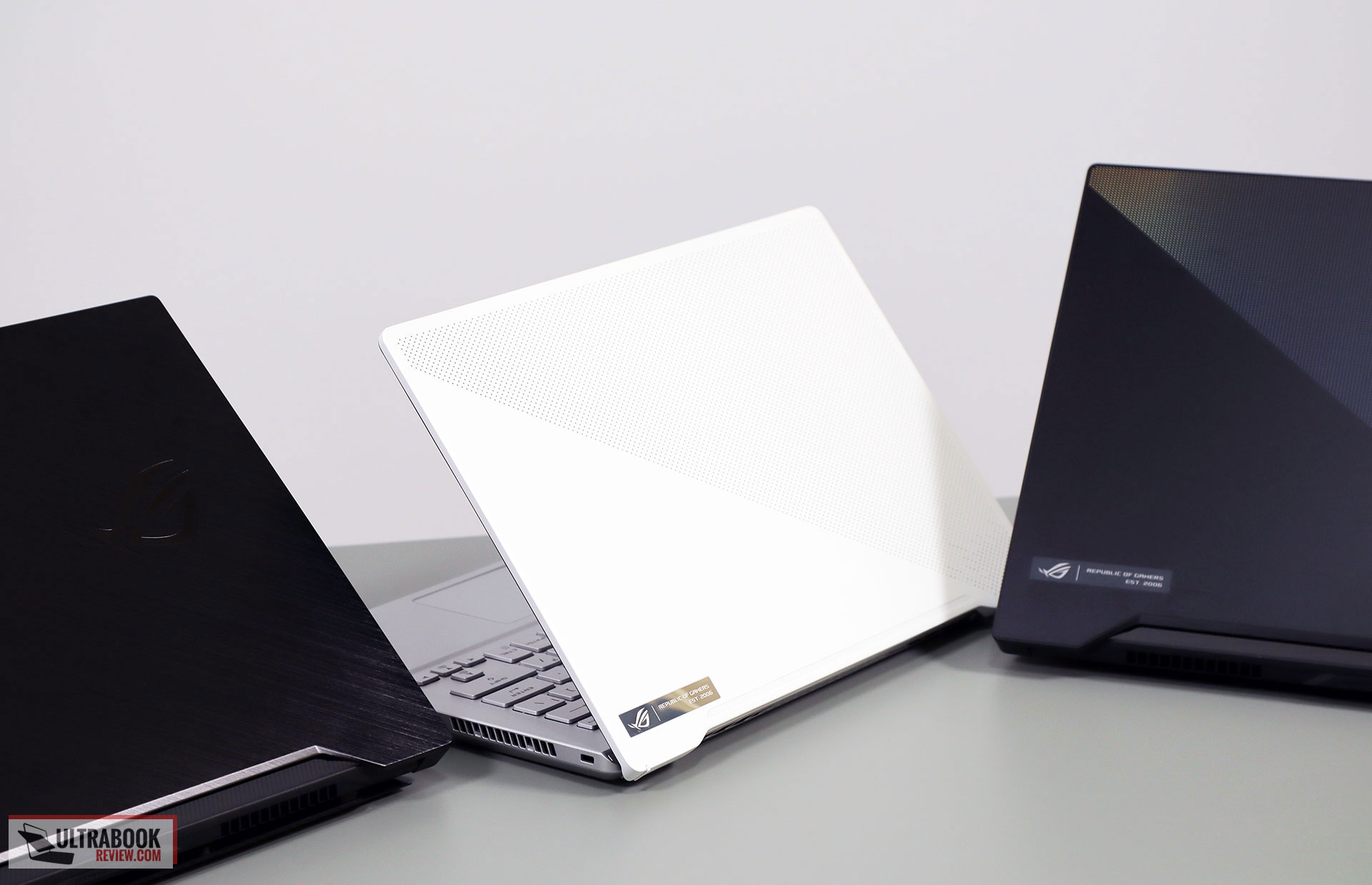
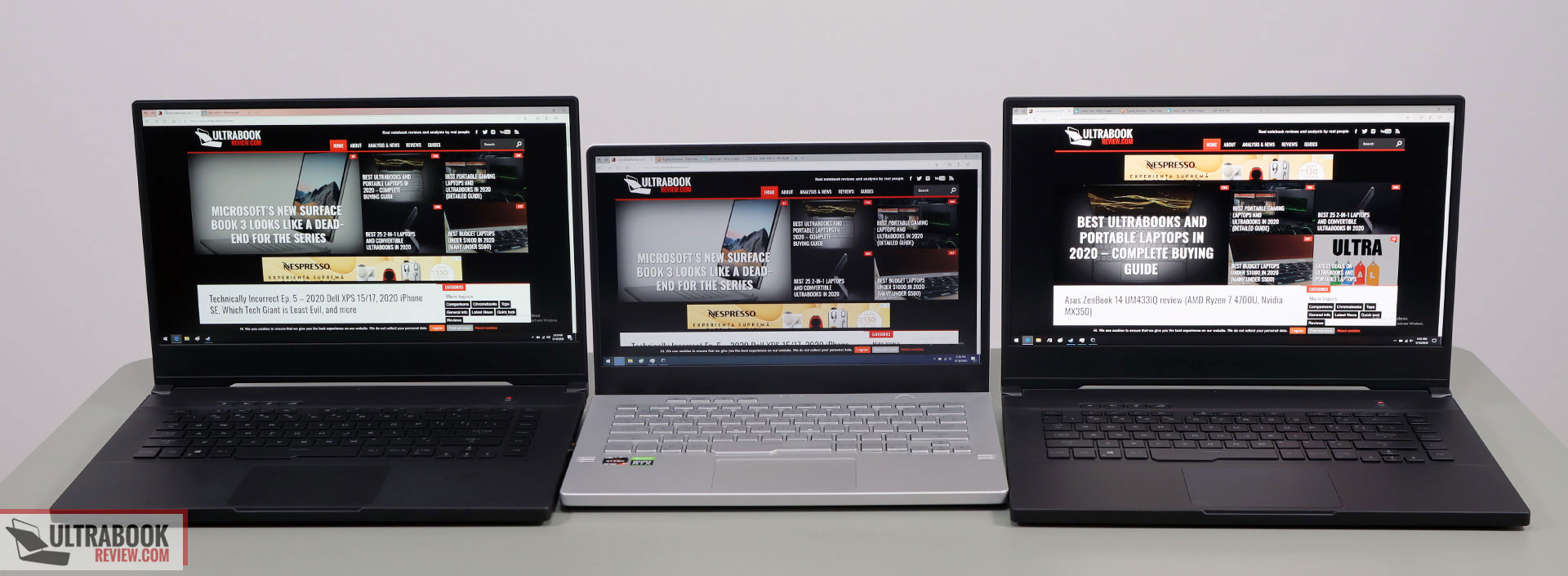



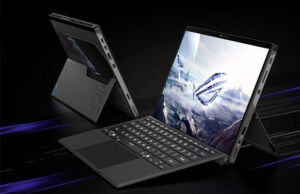

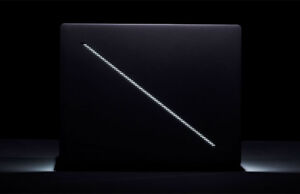
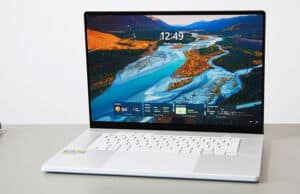



Comprizonz
May 28, 2020 at 3:45 am
It is astounding that the G15 as a budget Laptop being compared to G14 and M15 which has a price point of greater than $100-$250 (at same GPU selection).
Selecting the G15's 240Hz, 3ms, 100%sRGB, ~350nits screen option will make this laptop a good compromise vs. G14 and M15.
This G15 build quality is somewhat being last in this review, it is not bad either (actually its good vs. the competition in its price point).
Surely if you had a higher budget, there is a better option, but there is still a better option than your selected option if you increase a budget higher and when you increase your budget a little higher you can get the more little better than the better option… The point here is that just select the best Laptop within your budget (don't be fooled by the marketing traps to go a little higher) – anyways every year there is a better laptop at similar price bracket and old models will be phased out eventually.
Andrei Girbea
May 28, 2020 at 5:43 pm
I mention the solid pricing as an advantage for the G15, and I agree that the 240Hz model is pretty good value.
Jonathan
May 28, 2020 at 4:48 pm
Hey andrei, is 2019 model of M15 still worthy? due to the price and else? I don't think I really need the thunderbolt though… (comparing both with the GTX1660Ti model)
Andrei Girbea
May 28, 2020 at 5:10 pm
Definitely, but how much cheaper is it? the 2020 1660ti model is 1299 at bestbuy, not sure about that screen option though.
Jonathan
May 29, 2020 at 3:12 pm
Really? the base model of Zephyrus M (GTX1660Ti + 8gb of ram) in my country is still around 1700… You know, tax end else. Maybe I'll wait for the new M15 then and see how the price goes. Thanks for telling me that.
adam
May 28, 2020 at 7:49 pm
Great comparison article. Would hooking the g14 up to a monitor get rid of the slow response time or is it due to the GPU?
Andrei Girbea
May 28, 2020 at 7:56 pm
it would, the issue is the slower response of the included panel
Lawrence
July 26, 2020 at 9:21 am
How good is the M15 for content creation with the 240hz panel? I have the 4K display and the battery life on this thing is absolutely terrible, even with a lot of software tweaks to maximize it.
Andrei Girbea
July 29, 2020 at 10:45 pm
it's fine if you're OK with an 100% sRGB panel. If a 100% AdobeRGB screen is a must though, it might not be enough
Braden
November 21, 2020 at 11:03 pm
Great article! Very detailed.
Was looking into laptops recently, as all my comps are starting to show their age. On a whim, a friend decided to gift me the M15 (Prism Grey, 240Hz, 2070 Max-Q). I was pleasantly surprised when this thing chewed up everything I threw at it, including VR. Love the 240Hz screen by the way (almost needed for modern, fast-paced FPS). My only complaints are minor; they include: the CPU could have been a bit more powerful (read: non-Intel perhaps?), external construction would be a little nicer if it were all magnesium alloy, and finally, a webcam would be beneficial (especially true this year with the pandemic). If this is within your budget I'd definitely recommend this model. Cheers!
Lynton Bell
November 25, 2020 at 6:46 pm
Superb article Andrei, useful comparison. Shame that pcie limitations meant no higher than 2060 for Ryzen this time round but can't wait for Cezanne/Ampere 3070 combo in January!
Andrei Girbea
November 25, 2020 at 7:32 pm
I too am looking forward to some premium AMD designs next year
Kirish
June 9, 2022 at 1:34 pm
I am still unable to decide to get the 2021 g14 or g15.
I am looking for a laptop for college… Will be living in dorm for the next few years.
My use case is primarily for coding,software development and general multitasking. I also play valorant regularly and few AAA games once in a while. Portability, battery life and good inputs are pretty important to me as a student.
I did read the whole review, the data is impeccable, but i am having a tough time comprehending trying to visualize the statistics
Will the performance difference between g14 and g15 noticable in my use case.
Does the g14 or g15 become umcomfortable to touch in longer and intense workloads.
How is the lapability(describes the ability of something to be used effectively on your lap) of these device for basic tasks(browsing with few tabs, content consumption, etc)
Personally I am leaning towards the g14 due to the small form factor.